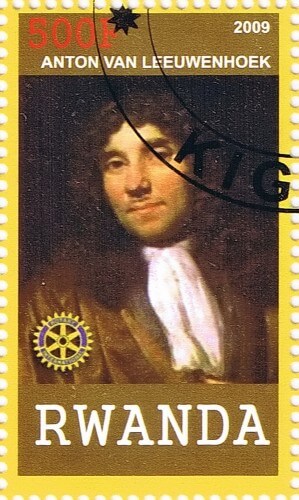Today 382 years ago, the Dutch merchant and scientist Anthony van Leeuwenhoek was born, who perfected the optical microscope and turned it into a scientific instrument, and the first to observe living cells and record them. Van Leeuwenhoek is considered the father of the science of microbiology

Today 382 years ago, the Dutch merchant and scientist Anthony van Leeuwenhoek was born, who perfected the optical microscope and turned it into a scientific instrument, and the first to observe living cells and record them. Van Leeuwenhoek is considered the father of the science of microbiology.
This year, the celebration of this discovery is particularly important, thanks to the Nobel Prize in Chemistry awarded to Eric Betzig, William Morner and Stefan Hell, the developers of nanoscopy - a means that made it possible to reach very high resolutions with optical telescopes, and to observe processes as they occur, and not just in their frozen product as in electron microscopes. (Ran: Nobel Prize in Chemistry 2014: turning the microscope into a nanoscope)
Van Leeuwenhoek first encountered a microscope at the age of 16, as part of his work at a fabric trading house. At that time, cloth merchants used to examine the quality of the cloth using simple microscopes that included one magnifying lens. Van Leeuwenhoek, who did not have a scientific education, became interested in improving the magnification of the devices and learned the profession of polishing lenses, and then began polishing lenses himself, and finally managed to build a microscope with a magnification of 250 times.
He began to examine insects and then the contents of liquids and plants, and thus discovered for the first time the cells that make up plants, and also observed blood cells and bacteria for the first time. Van Leeuwenhoek became a member of the Royal Society of Sciences of London, and for 50 years, almost until his death, he sent it about 560 letters describing his observations under the microscope and his discoveries.
An article on the history of the microscope
A film describing the principles of operation of the optical microscope

2 תגובות
I liked the article but not the video.
History is beautiful.
The Nobel Prize-winning work in chemistry, demonstrated only in 2000, pushes the optical microscope far beyond the Fresnel/Frauenhofer limit of the technology we had until then, and did not exhaust itself. The optical microscope, combined with photo-fluorescence, and near-field and far-field optics (terminologies that describe correctness of optical radiation propagation patterns), and a computer that performs image processing - produce an optical microscope much more powerful than what we had as children. The gist of the achievement: the microscope became a nanoscope.
Continued work is being done today. A beautiful description of the physics and the story behind it which is no less interesting about the faculty member who left the academy (Eric Batzig) and returned is in the essay
http://www.nobelprize.org/nobel_prizes/chemistry/laureates/2014/popular-chemistryprize2014.pdf